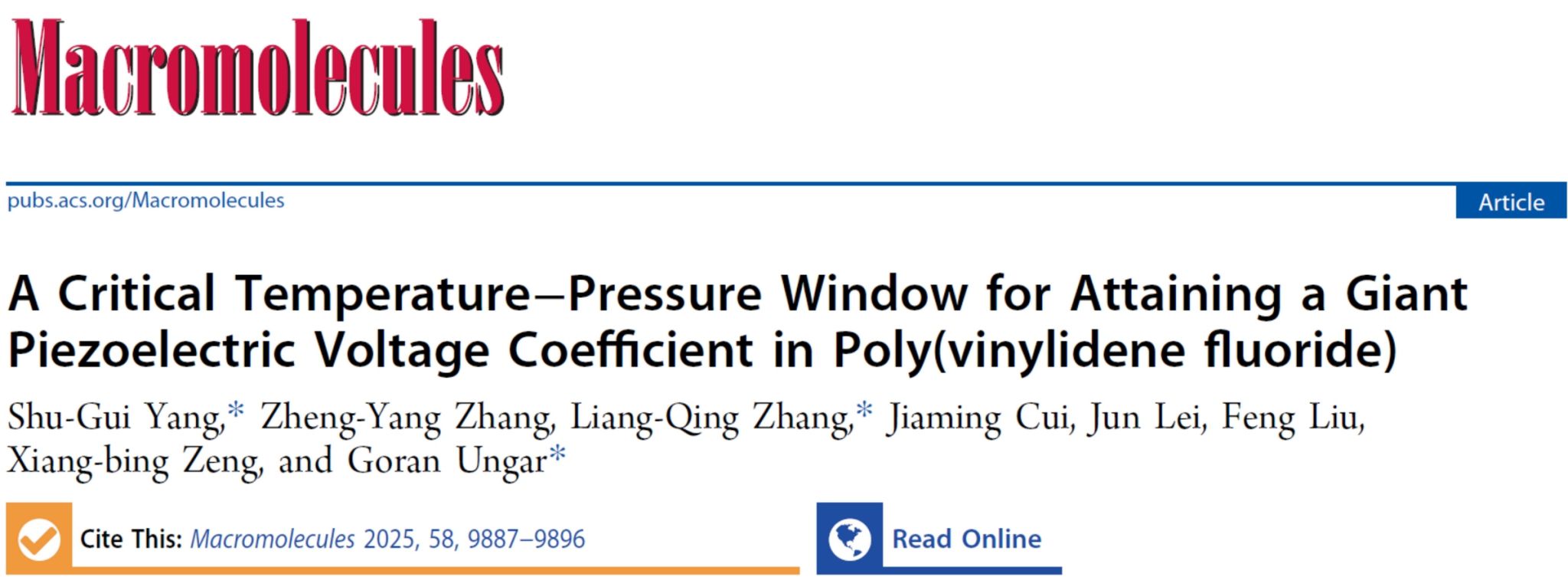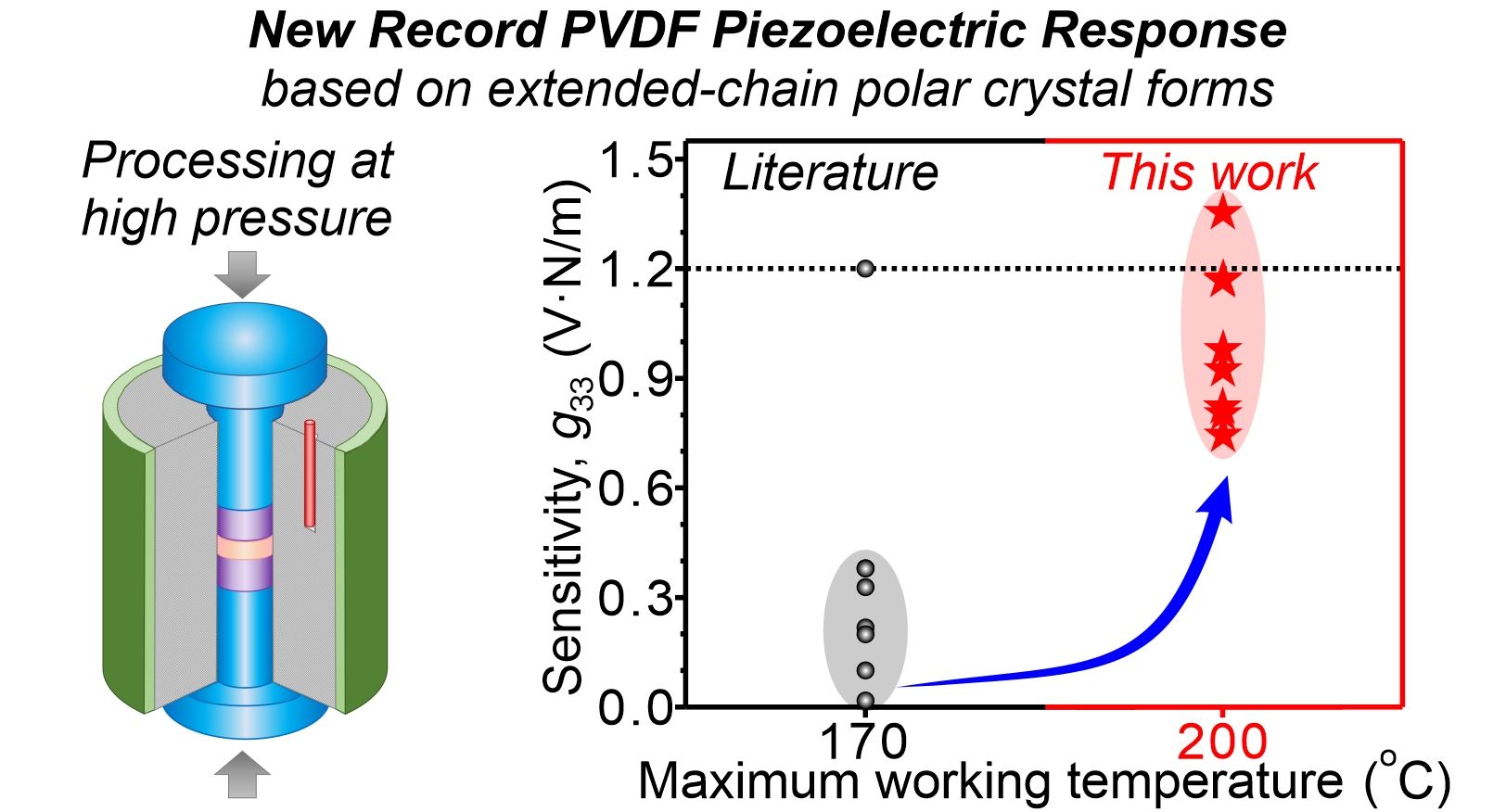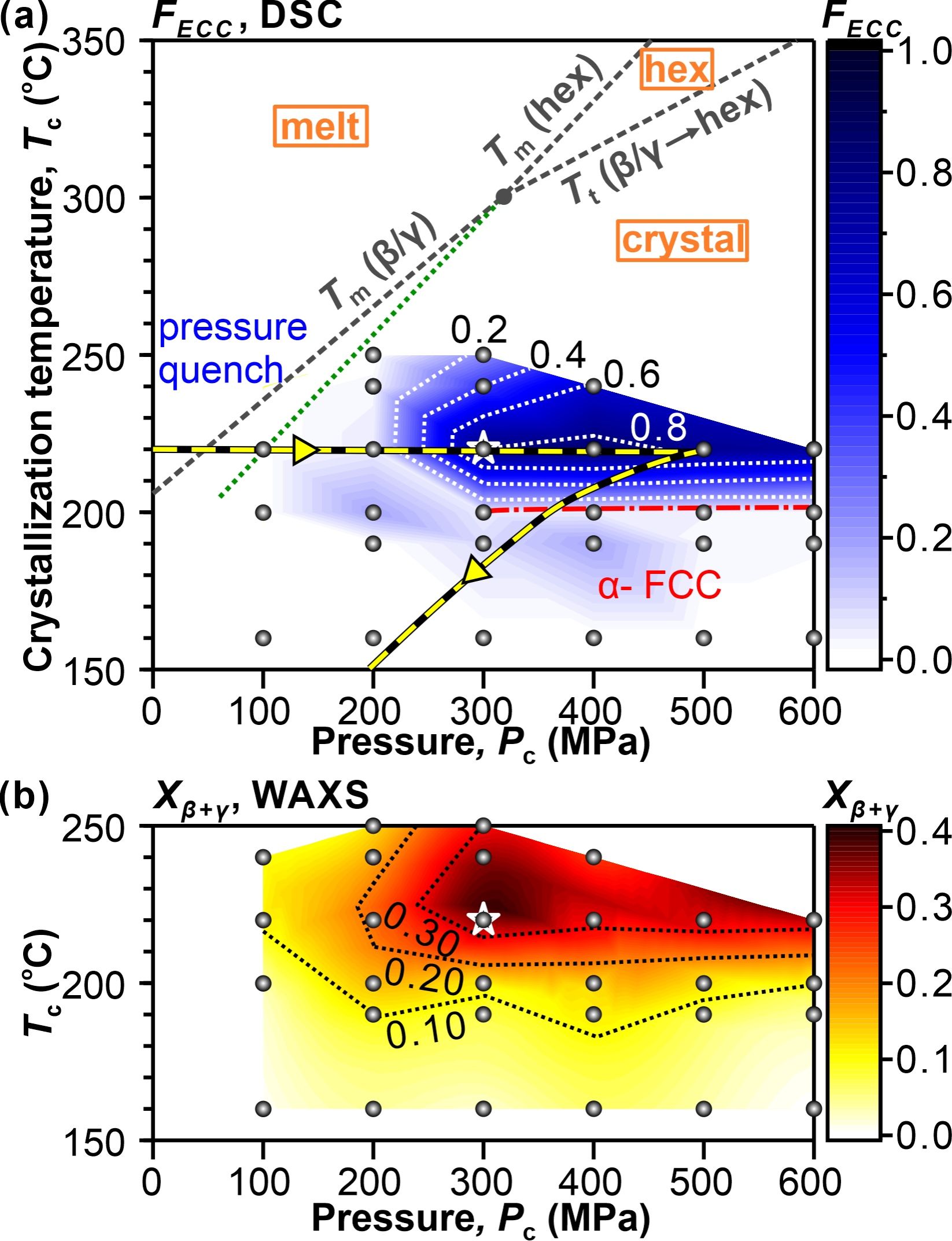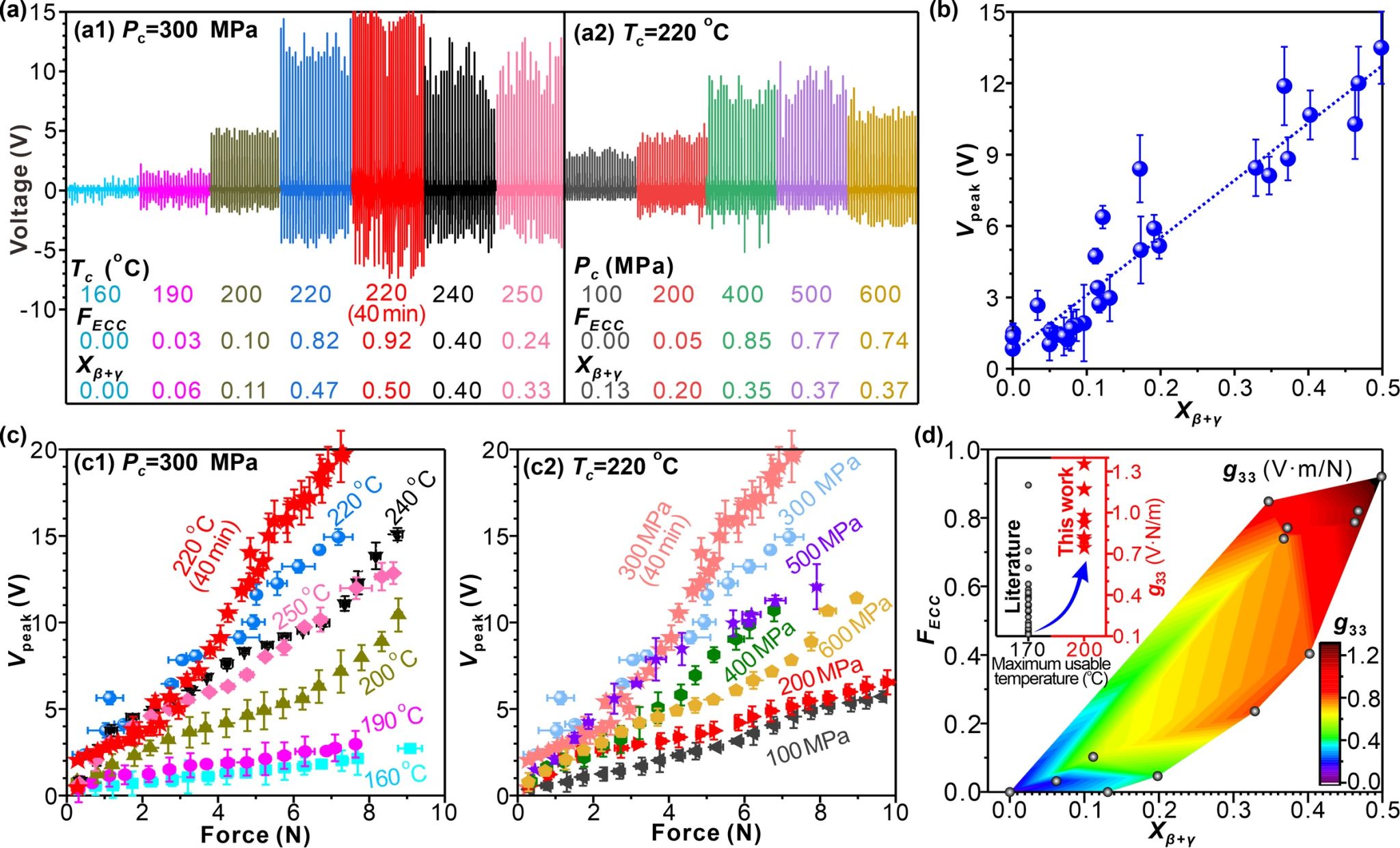
Shu-Gui Yang,* Zheng-Yang Zhang, Liang-Qing Zhang,* Jiaming Cui, Jun Lei, Feng Liu, Xiang-bing Zeng, Goran Ungar*. Macromolecules 2025, 58 (18), 9887–9896

A large piezoelectric voltage coefficient (representing the sensitivity) and a high melting temperature (determining the operating-temperature range) are important for broadening the range of application of poly(vinylidene fluoride) (PVDF) sensors. It is known that the electric response to mechanical stress of PVDF increases with increasing fraction of noncentrosymmetric (or “polar”) β and γ crystal forms (Xβ+γ), as well as with increasing fraction of extended-chain crystals (FECC).

Figure 1. Contour maps of ECC fraction, FECC (a), and polar forms crystallinity, Xβ+γ (b), of PVDF crystallized at different temperatures (160 °C–250 °C) and pressures (100 MPa–600 MPa).

Figure 2. Piezoelectric performance of high-pressure crystallized PVDF.
In this work we investigate the development of different crystal forms (α, β, γ) and morphologies (extended and folded-chain crystal) through pressure-quenching and subsequent crystallization of PVDF over a wide range of temperatures (160-250 °C) and pressures (100-600 MPa). We describe a temperature–pressure (T–P) window for achieving both high Xβ+γ and high FECC through intervention of the high-pressure hexagonal mesophase. Importantly, we show that high Xβ+γ and FECC can be achieved under considerably milder conditions, 100 °C and 100 MPa below the equilibrium T–P range of the mesophase. By rapidly pressure-quenching the melt significantly below the triple-point temperature, direct melt-crystallization is bypassed, and the system enters a heavily superpressed and supercooled metastable range of the mesophase. This enables the lamellae of the mesophase to grow and thicken, subsequently transforming to largely extended-chain β and γ forms. Thus, a T–P processing window opens up, leading to a marked increase in the piezoelectric response. This way, we achieved a record PVDF piezoelectric voltage constant g33 of 1.35 V·m·N–1. Moreover, the chain extension involved also raises the melting point of the polymer by ∼30 °C, making the sensors usable at higher temperatures. This study offers guidance for the development of high-sensitivity PVDF-based piezoelectric sensors for applications across a broad temperature range.
First Author: Assoc. Prof. Yang Shugui , Xi’an Jiaotong University
Correspondence Authors: Assoc. Prof. Yang Shugui, and Prof. Goran Ungar, Xi’an Jiaotong University; Assoc. Prof. Zhang Liangqing, Xi’an University of Science and Technology
Full Text Link: https://doi.org/10.1021/acs.macromol.5c01590